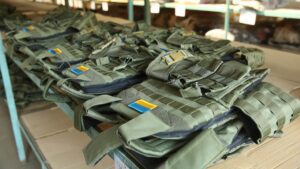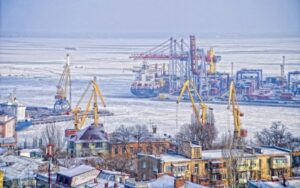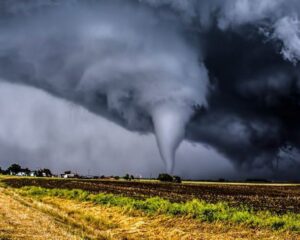Number of refugees from Ukraine in selected countries as of 30.10.2022

Source: Open4Business.com.ua and experts.news.

Metinvest Mining and Metallurgical Group has handed over almost a million liters of fuel and 312 vehicles of various types to units of the AFU during Russia’s full-scale invasion of Ukraine.
According to a company press release, this way increases the mobility of defenders as part of Rinat Akhmetov’s Steel Front militarized initiative.
“The war of the XXI century is the confrontation of technology. Therefore, the advantage in the battlefield often depends on equipping the troops with the right equipment. In addition to weapons, vehicles are important. It is they that help fortify positions, provide the necessary units, move quickly and stay one step ahead of the enemies. To keep our defenders mobile, Metinvest Group sends fuel and vehicles to the front lines,” the press release states.
It is noted that in ten months of full-scale war Metinvest allocated over 2.8 billion UAH, so that Ukraine could withstand and win. More than half of this amount, 1.5 billion UAH, went to the army and the military.
Thus, at the beginning of the full-scale invasion the defenders received special-purpose vehicles from the company’s enterprises. These were trucks, bulldozers and excavators. They were used for construction of fortifications and construction of protective structures.
“Metinvest, within the framework of Rinat Akhmetov’s Steel Front militarized initiative, organized the delivery of vehicles from abroad. Primarily pickup trucks, all-wheel-drive jeeps and vans were purchased and sent to the front lines – they were needed at all front lines to deliver ammunition and personnel, evacuate the wounded, transport important cargoes, conduct redeployment and conduct raids behind enemy lines.
In addition, Metinvest provided military medics of the Main Directorate of Intelligence of the Ministry of Defense of Ukraine with ambulances. 20 specialized vehicles were purchased in Europe to save the lives of wounded fighters.
Metinvest Group also donates fuel for the needs of the Armed Forces and Territorial Defense Forces. The defenders were allocated almost a million liters of gasoline and diesel fuel to fuel their vehicles and military equipment. It especially supported the military in spring, when there was a shortage of fuel on the market. And the scarce product is also systematically sent to the communities of Avdeevka, so that critical infrastructure services take care of the citizens.
“Our defenders are pushing hard to cleanse Ukraine of its enemies. And we have made sure that the AFU has vehicles and full tanks of fuel. This war is built on mobility and the ability to stay ahead of the enemy. That’s why we also provide the military with technological drones and thermal imagers. And while the defenders defend our country’s independence on the front lines, Metinvest Group is their reliable support in bringing Ukraine’s victory closer,” said Metinvest CEO Yury Ryenkov, quoted by the press service.
“Metinvest is a vertically integrated group of mining and metallurgical enterprises. Its enterprises are located in Ukraine – in Donetsk, Lugansk, Zaporozhye and Dnipropetrovsk regions and in European countries.
The major shareholders of the holding are SCM Group (71.24%) and Smart Holding (23.76%) that jointly manage it.
Metinvest Holding LLC is the management company of Metinvest group.

The Joint Coordination Center (JCC) reported that due to unfavorable weather conditions, vessels were unable to leave Ukrainian ports during Tuesday.
“On January 10, due to unfavorable weather conditions, not a single vessel left Ukrainian ports within the framework of the Black Sea grain initiative,” the report reads.
It is noted that “due to the strong wind and large waves, the team of joint inspection was not able to board the vessels to conduct inspections”.
On January 9, dry cargo vessels were also reportedly unable to leave Ukrainian ports due to bad weather.
Five dry-cargo carriers headed for Ukrainian ports, which passed through the maritime humanitarian corridor on Tuesday.
The SCC reported that “76 applications for participation in the initiative have been submitted.”
“As of January 10, the total tonnage of grain and other agricultural products exported from the three Ukrainian ports is 16,945,661 tons. A total of 1,264 dry cargo ships have been allowed to move so far: 631 to arrive at Ukrainian ports and 633 to leave them,” summarized the JCC.

The Parliamentary Committee on Finance, Tax and Customs Policy on Tuesday recommended that draft laws No. 8298 and No. 8299, which exempt the import of equipment and components for own production from VAT and duties until the end of martial law (MP), be passed as a basis, the committee head Daniil Hetmantsev said in a telegram.
“The Ministry of Finance did not support almost the entire law … During the committee noted that without the agreement of the IMF this bill will not be adopted. Negotiations with the IMF on this law have not yet been held,” the deputy head of the committee Yaroslav Zheleznyak indicated in Telegram.
As specified Getmantsev, the bills also include preferential rent for iron ore and water for the period of the EaP, as well as single tax benefits for the taxpayers of Group 4.
In addition, it is planned to extend the life of the registered EDR, which had such a term expired during the EaP, as well as the abolition of taxation for electronic stamps and digital postage stamp and services for the demonstration and demonstration of films with Ukrainian dubbing.
“My prediction is that we will never accept it as a whole in this volume, precisely because of the IMF position,” Zheleznyak said.

Some 1,092 Starlink terminals have been delivered to Ukrainian medical institutions, the Ministry of Health told Interfax-Ukraine, citing deputy minister Maria Karchevych.
“We understand that there are power outages now, and we provide our medical institutions with alternative opportunities. For example, over the past few months, 1,092 Starlink terminals have been delivered to medical institutions so that clinics can connect to the Internet,” the ministry said.
Karchevych also said that despite the challenges of wartime, the digitalization of the healthcare system and the introduction of electronic tools continue in Ukraine. In particular, in 2022, more than 10 million prescriptions worth UAH 2.2 billion were issued under the Affordable Medicines program. Also, according to the ministry, more than 1 billion records have been entered into the e-health system, while 35 million Ukrainians have declarations with their family doctor.

Cumulative damage to the world economy from natural disasters in 2022 decreased by about 15% compared with 2021 and amounted to about $270 billion against $320 billion, according to preliminary data from Germany’s Munich Re, the largest reinsurance company in the world.
The volume of insured losses, meanwhile, remained virtually unchanged at $120 billion.
Economic losses last year were in line with the average of the previous five years, while insured losses were well above average ($97 billion in 2017-21).
“It is alarming that natural disasters particularly affect citizens in the poorest countries. That’s why preventive measures and financial protection, such as insurance, are especially important,” said Thomas Blunk, a member of Munich Re’s board of directors.
The most devastating event of the past year was Hurricane Ian, which struck the Florida coast in September, bringing wind gusts of nearly 250 kilometers per hour. It caused an economic loss of $100 billion, with insured losses of $60 billion. In terms of damages when adjusted for inflation, Ian is second only to Hurricane Katrina in 2005.
In second place is the flooding in Pakistan, caused by a record monsoon in terms of rainfall. Some 1,700 people were victims of the flooding, and the direct damage was at least $15 billion, virtually all of it uninsured.
“When analyzing the data for 2022, there are two key factors to keep in mind. First, the La Niña phenomenon is in its third consecutive year, increasing the likelihood of hurricanes in North America, flooding in Australia, drought and heat waves in China, and heavy monsoons in parts of South Asia. In addition, extreme weather events have become more frequent due to climate change. Sometimes these factors overlap,” wrote Ernst Rauch, chief climate scientist at Munich Re.